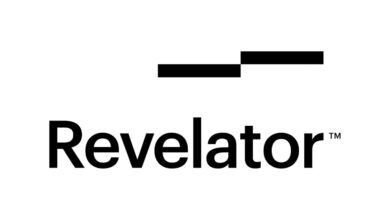Product Managers, Designers, and Devs: What Does Their Future Look Like in a World Filled With AI?

Obviously, no job family is going to disappear overnight; change takes time. But looking ahead helps orient everyone’s energy and steer careers away from the doom and gloom of job decline.
Reading AI job impact reports can give you vertigo:
World Economic Forum : “In the next five years, 83 million jobs will be lost and 69 million are projected to be created”
- 40% of the global workforce – 1.4 billion people – will need to reskill. (
IBM study )
As a product manager, I naturally ask the question of whether there’s a future for my career in the post-AI world.
These numbers can sound bad enough to throw in the towel and say “Well, I’ll just give up I guess, look the other way, and see what happens”. But
- disruptive trends are visible far in advance if you’re looking the right way and can sift through some noise,
- getting to a level of operational expertise in any emerging tech is relatively simple.
There are jobs that will probably, within the next several years, be displaced almost completely (my one bet is on frontline customer support), and then there are jobs that will go through a boom cycle.
For those, the traditional market won’t be able to provide enough supply, and we will see similar qualifications rebranding as we did with coding boot camps over the last 10-15 years.
Most of us in tech will likely land somewhere in the middle: even if the changes come quickly, we have the choice and the luxury of iterating towards new skills (and opportunities) rather than needing a complete pivot.
Designers, Devs, and PMs: AI Will Kill Some & Create Some
By 2027 (
- Demand for designers will increase some;
- Depending on the type of developer, the jobs might see up to a 25% increase (blockchain developers being one of the leaders of the pack!)
-
Roughly ~10% of PM jobs are going to die, and roughly ~10% will be added, so net zero. Product management is actually
one of the top AI talent demands . But the experience of an AI PM vs. a random PM is not fungible, so the key advantage is to be as close to the growing tech (whether it’s AI or other) as possible.
Macro Trends That Will Influence Our Individual Experience: Engel’s Pause & Solow’s Paradox
It will take more than just job opportunities that will determine how we experience progress, our own relevance, and careers of the next decade or two; it will be influenced by macro trends too.
The Mid-Term Impact Might Be Just Bad in General, but Hopefully, We’ll Live to See the Turnaround: Engels’ Pause
Engels’ Pause describes the British industrial revolution in the early 1800s when working-class wages stagnated while GDP grew quickly. There are several theories, the bottom line being that the owners and investors of the booming businesses pocketed the gains and kept wages relatively flat.
If it sounds familiar –
He explains that early labor-replacing technologies tend to decrease wages; once more sophisticated labor-augmenting technologies show up, wages and demand for talent tend to increase:
“If technology replaces labor in existing tasks, wages and the share of national income accruing to labor may fall. If, in contrast, technological change is augmenting labor, it will make workers more productive in existing tasks or create entirely new labor-intensive activities, thereby increasing the demand for labor.
(…) The growing capital share of income meant that the gains from technological progress were very unequally distributed: corporate profits were captured by industrialists, who reinvested them in factories and machines.”
This is an optimistic sign! And aligned with what the enterprises expect:
87% of executives surveyed believe employees are more likely to be augmented than replaced by generative AI.
IBM
From
“As some experts look at how employeesʹ current tasks will be affected by generative AI and automation, they divide the work into three types: transactional, relational, and expertise-related. Much of our transactional work will be substituted by a combination of robotic process automation, machine learning, and generative AI, while work requiring deep expertise or human collaboration will increasingly be augmented.”
Waiting for the Immediate Signs of AI Revolution Might Be a Snoozefest: Solow’s Paradox and the Productivity J-Curve
Solow’s Paradox and
A similar question was raised in 1987, when economist Robert Solow observed a disconnect between the burgeoning computer age and the anticipated productivity gains — an observation now known as “Solow’s paradox.”
Businesses and governments poured money into IT infrastructure, yet the expected leap in productivity was conspicuously absent. This paradox left many wondering if the problem lay not with the capacity of the technology but rather with the manner of its implementation. (
OWF )
Erik Brynjolffsen explains why that might be happening:
General purpose technologies enable and require significant complementary investments, including co-invention of new processes, products, business models and human capital. These complementary investments are often intangible and poorly measured in the national accounts, even when they create valuable assets for the firm.
He
It wasn’t until the new wave of managers redesigned the systems and workflows for the affordances of the electric engine that the expected innovation and productivity could be seen.
Nobody Should Count on Employers to be the Drivers of Effective Re-Skilling
One might say “OK, so if AI is so important, and there is not enough talent out there to hire, then surely the companies will invest money to train people.” And sure, they will; there are plenty of statistics that confirm that.
But there’s already a significant and growing mismatch between what (and how quickly) companies are able to provide and what people need for their jobs – let alone what employees will need to be competitive in the job market vs. just slightly better at their existing, narrowly defined jobs. From
Ok, So What’s the Recipe for Staying Afloat Here?
On an individual level, there’s a discouraging disconnect between:
- The vague promises of what AI is supposed to be able to do, or how it should be revolutionizing our work, versus what the existing products can do in practice right now;
- between what the demand for AI talent is looking for, and where the supply market is (i.e., where we, the employees, are) today.
But both of these trends are moving pieces; the key is to be one of the pieces moving along, not staying behind. The antidote is to use something, build something, and learn something (which I cover in my next post) until, inevitably, each of us starts to notice the applications and opportunities that actually bring progress:
PS. If you liked this post – you might like my future takes at hypegeist.substack.com, where I write pragmatic takes on disruptive tech & its opportunities, with a sprinkle of deep dives into data and market insights.
Also published here







